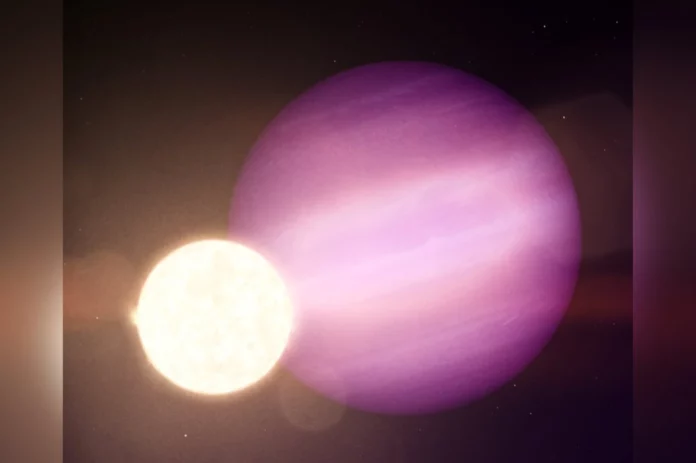Astronomers using the James Webb Space Telescope have detected the faint light of a planet that is colder than any other world whose light can be directly observed – an amazing discovery that reveals the extreme conditions of some worlds in our universe.
The exoplanet WD 1856+534 b was first spotted in 2020 and is twice as old as our solar system. It is the size of Jupiter, but about six times more massive and much colder: its average temperature is only -125° Fahrenheit (-87° Celsius). This makes it the coldest exoplanet ever directly observed by its own radiation. The team’s study, which describes the exoplanet and its thermal radiation, is now posted on the arXiv preprint server.
The exoplanet orbits a white dwarf, the ghostly ash of a dead star. In fact, this is what made it possible to detect the object: usually, stars are so bright that they drown out the much dimmer glow of the planets that orbit them. The star WD 1856 b is so dim that the exoplanet itself was visible to Webb’s eyes. Astronomer Mary Ann Limbach from the Department of Astronomy at the University of Michigan contributed to the study.
Even more surprising is where this planet is located. WD 1856 b orbits at a distance of just 0.02 AU from its white dwarf star – closer than Mercury is to our Sun. “WD 1856+534 b is the first intact exoplanet discovered in the ‘forbidden zone’ of a white dwarf, a region where planets would be swallowed up during the red giant phase,” the authors explain, adding that its “presence provides direct evidence that migration of planets into close orbits, including habitable zones, around white dwarfs is possible.”
The team’s work also places WD 1856 at the top of the cold world hierarchy. Right behind it is Epsilon Indi Ab, a planet that Webb explored just last year, making it the coldest imaged planet outside our solar system at the time, with an estimated temperature of 35 degrees Fahrenheit (2 degrees Celsius). Suffice it to say, WD 1856 b is much colder.
These findings also resolve a long-standing identity crisis. Until now, WD 1856 b was considered a low-mass brown dwarf. But thanks to its low temperature and revised mass estimates (no more than 5.9 Jupiter masses), it has officially been added to the catalog of thousands of exoplanets that scientists have compiled over the past few decades.
This study is also an important proof of JWST’s ability to study cold, mature planets – and a reminder that even worlds orbiting the burned-out cores of dead stars can still glow, albeit with a faint light.









